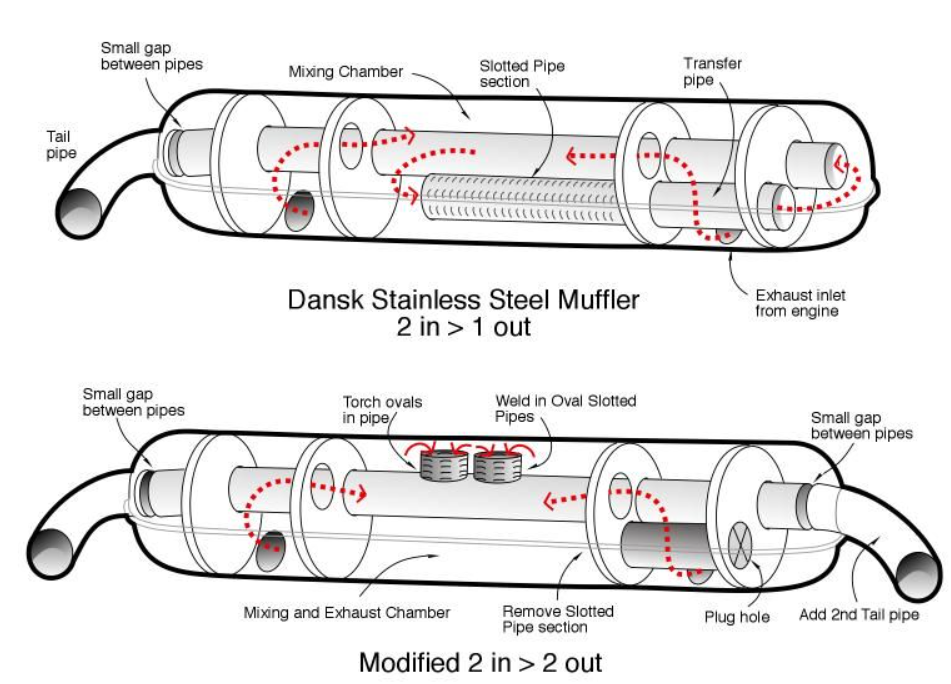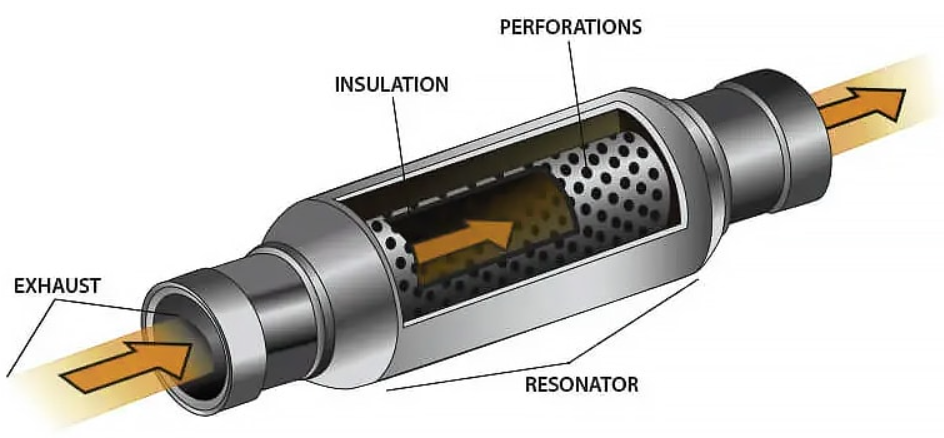Muffler Or Resonator – What is it?
In automotive engineering, every component influences a vehicle’s performance and sound. Mufflers and resonators often puzzle car enthusiasts, despite both managing exhaust noise. This section explains their distinct roles.
Mufflers: Noise Reduction
Mufflers lessen exhaust gas noise using chambers and baffles to disrupt sound waves. They have a cylindrical or box-like housing with perforated tubes. Gases pass through, canceling sound waves for a quieter exhaust. Mufflers may impact performance. Restrictive designs can create backpressure, lowering horsepower. Performance mufflers balance noise reduction with minimal flow restriction.
Resonators: Frequency Adjusters
Resonators tune the exhaust to remove specific frequencies causing drone or resonance. Unlike mufflers, they refine sound rather than reduce all noise. They feature a hollow chamber with perforated tubes or sound-absorbing materials to target certain frequencies.
Resonators have little effect on performance since they don’t restrict flow. They improve comfort by cutting unwanted noise.
Key Differences
– **Purpose:** Mufflers reduce overall noise; resonators eliminate specific drone frequencies.
– **Design:** Mufflers use baffles to absorb sound; resonators tune with hollow chambers.
– **Impact on Performance:** Mufflers may limit flow; resonators usually do not.
Mufflers and resonators affect exhaust sound and performance in unique ways. Knowing their functions aids enthusiasts in upgrade decisions. Choose them based on whether you want quieter rides or refined tones.
There is not one brand of performance mufflers or resonators that we are beholden to. There are many to choose from: WickedFlow, Flowmaster, Vibrant Performance. We provide you with options!


